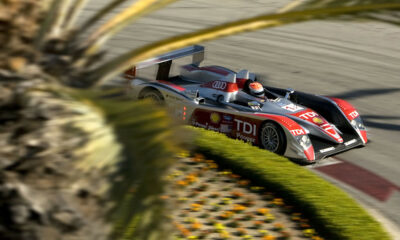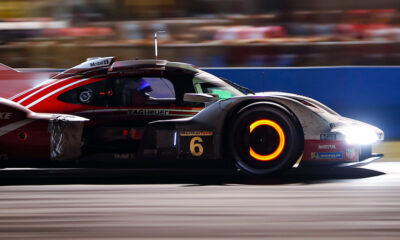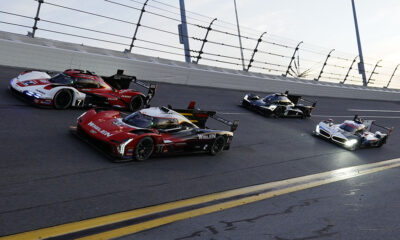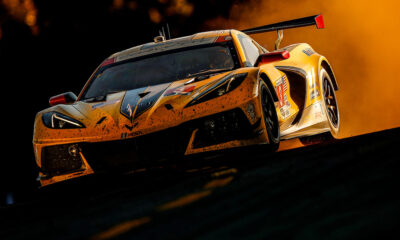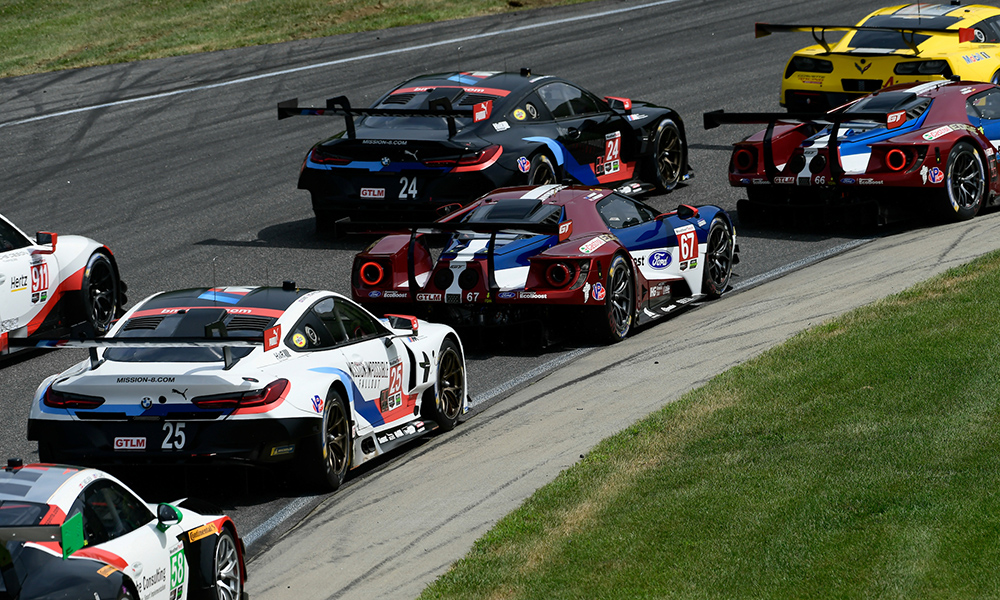
Photo: Michelin
The NASCAR world is all about optimizing your car for constantly turning left. The IMSA sports car world… well, that’s different.
But at Lime Rock Park, it’s all about nailing the setup for constantly turning right. Except the track throws in one quirky left-hand turn to upset the balance.
Either way, it’s a race where nailing six of Lime Rock Park’s seven right-hand corners as fast as possible is key to success on the 1.474-mile “bullring.”
Long Stints, Short-to-No Yellows
The flood of right-hand turns works the left-side Michelin tires the hardest over the course of some particularly long stints.
As the first of two GT-only showcase races for the IMSA WeatherTech SportsCar Championship, drivers may need to stretch a set of tires north of 70 laps on a stint over the course of the two-hour, 40-minute race.
The yellow flag hasn’t flown frequently at Lime Rock in the two GT-only events here the last two years.
In 2017, the race ran caution-free for 181 laps. Last year, there was a caution after the first lap for contact between two GT Daytona class cars. But after seven laps behind the Safety Car, there were no more yellows over the course of the 178-lap race.
So that’s two years of GT racing with more than 350 laps completed and exactly seven early race laps under yellow. These are 50-to-51-second race laps, so they click off quickly.
Pitting under green and getting caught out can have catastrophic consequences, costing a driver and team up to two laps.
“We’ve seen times where we go remarkably caution free, and we’ve seen the opposite!” says Ken Payne, technical director, motorsport, Michelin North America.
“How these variables come into play will lead to some teams making interesting calls in real time as they see how the race unfolds.”
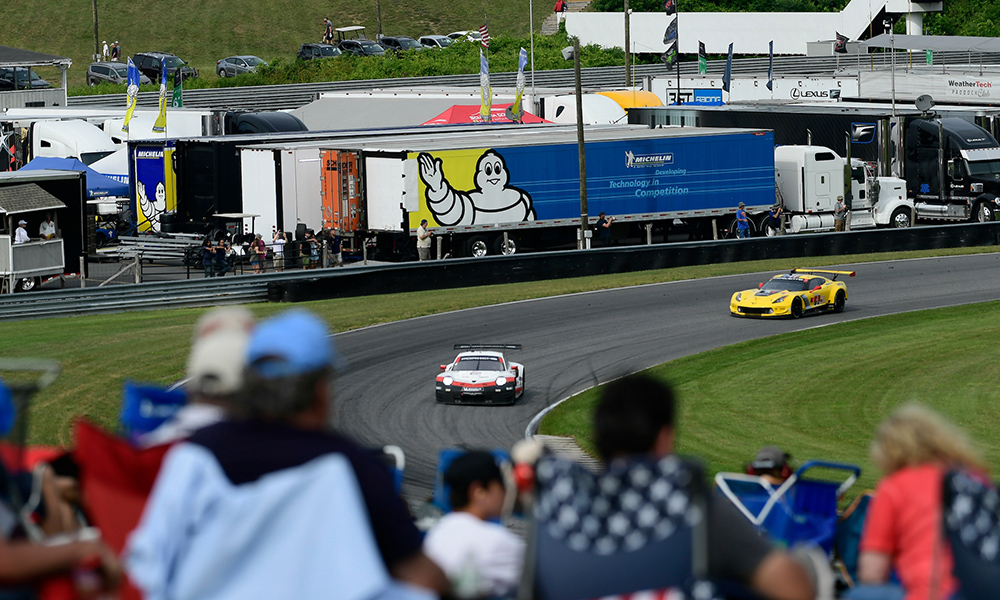
Photo: Michelin
Heat Watch?
While IMSA GT Daytona and IMSA Michelin Pilot Challenge teams use the Michelin Pilot Sport GT S9M hard commercial tires, IMSA GT Le Mans teams can select from their three proprietary compounds to deliver success at the track.
Lime Rock is traditionally a hot event with ambient temperatures in the high-80s to low-90s. If it’s cooler than that, that could open the option for the GTLM teams to use their soft compound.
But last year’s race wasn’t as hot as it usually is in Lime Rock. Michelin engineers recorded the highest in-race temperatures of 86 degrees ambient and 95 degrees on track.
Ordinarily, the ambient temperature is north of 90 degrees and track temperatures are well north of 100.
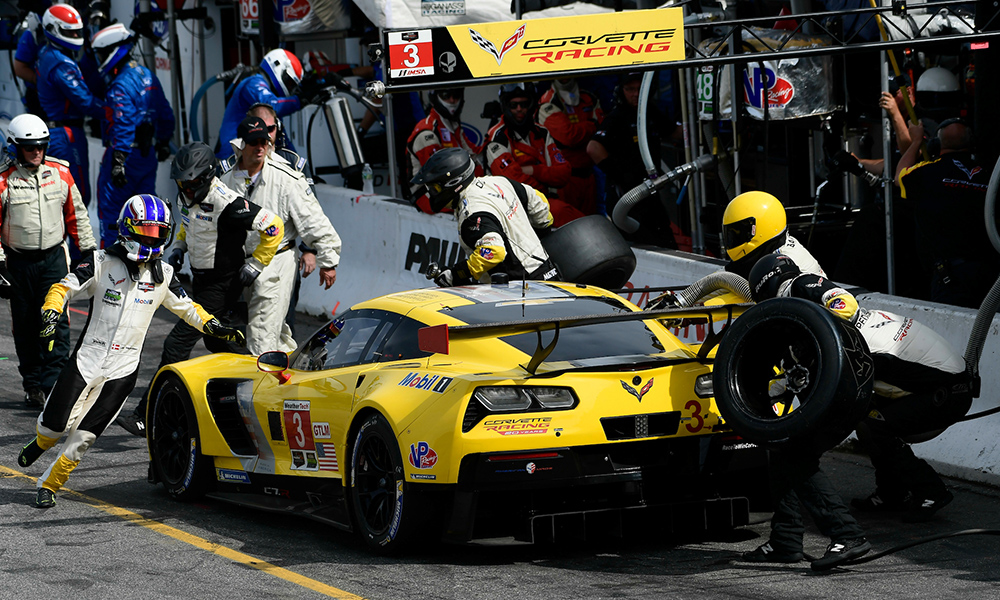
Photo: Rick Dole/IMSA
Strategic Chess Match
There’s also the question of what strategy teams will deploy late in the race. Two-tire pit stops could help a team move forward at any stage.
“The ability to change only rears, or only left sides, will likely come into play at Lime Rock,” Payne says.
“Given it’s mainly a clockwise track, it works the lefts so much harder than the rights. I wouldn’t be surprised to see GTLM teams take advantage of the multiple compounds they have and doing ‘mix-and-match’ between corners of the car.
“In other classes, it wouldn’t surprise me if they’re hard on the rears, just change rears, or perhaps just change a left corner.”
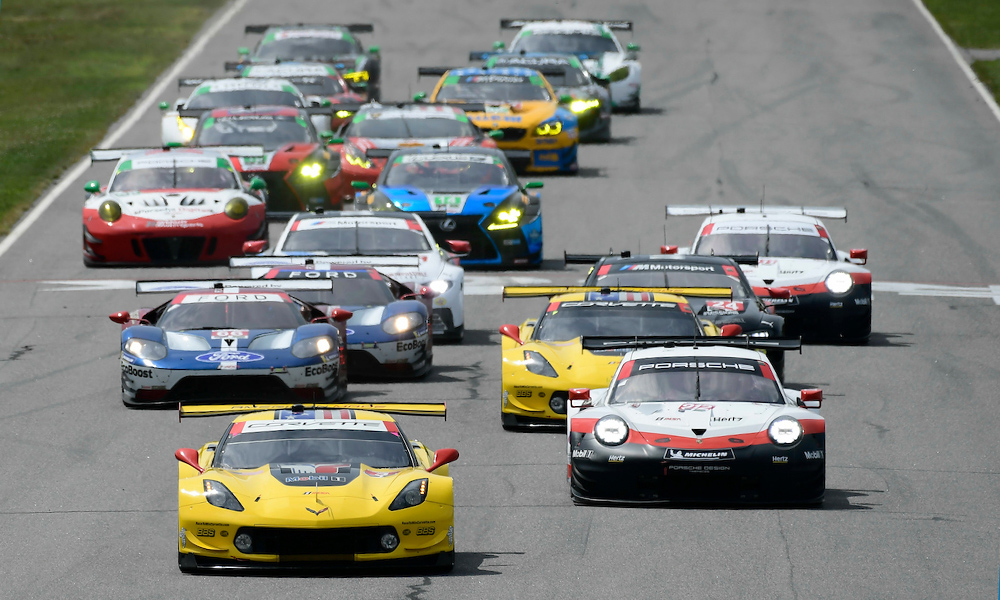
Photo: Rick Dole/IMSA
Compression Factor
In both the WeatherTech Championship and Michelin Pilot Challenge races, the classes are particularly close together from first to last.
Last year in qualifying, the top seven of eight cars in GT Le Mans qualified within just 0.631 of a second. In GT Daytona, the top eight of 10 cars there had an even tighter spread of just 0.498 of a second. The GTD pole-sitter, Patrick Long, qualified just over eight tenths behind the slowest GTLM qualifier.
GTD cars have extra electronic driver aids like ABS and traction control. That, coupled with their switch to Michelin tires this year, may see them even closer to the back of the GTLM field this year.
The GS and TCR race last year saw some TCR cars qualify faster than GS cars, before the field was reordered by class for the start.
Even so, like at Mid-Ohio, there is a good chance some TCR cars could finish among the GS field and score an overall top-10 result.
In both races, that means traffic management is vital.
“Traffic will be a challenge,” Payne admits. “Strategic calls in the pit box to either address a traffic problem or take advantage of a track position problem are going to be really important in Lime Rock.”




















